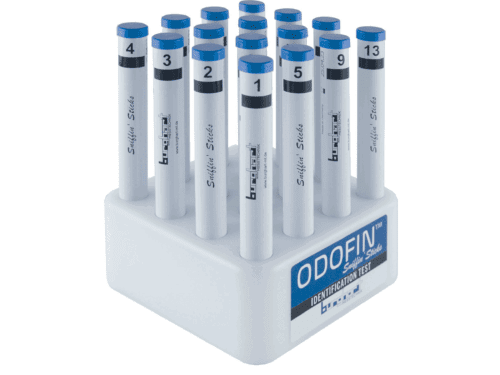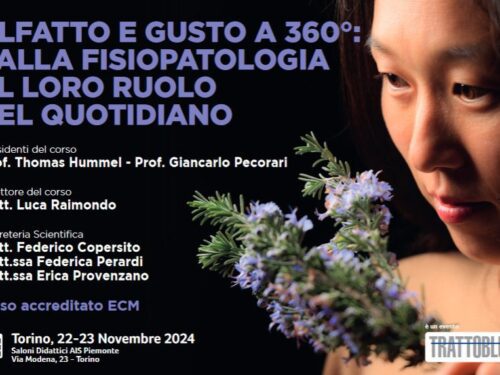While COVID-19 is spreading all over the world it is also becoming clear that the loss of sense of sense of smell is a possible marker of the COVID-19 virus. It is well known that post-viral anosmia is one of the most important causes of loss sense of smell in adults, accounting for up to 40% of anosmia. Anosmia is the loss of the ability to detect one or more smells. In Italy there were cases that besides the known symptoms such as fatigue, fever and cough people had trouble with smelling strong odors such as bleach or garlic. More and more facts are emerging that indicate that a sudden loss of smell can indicate a corona infection. In addition, it can be a clear indication that someone is a “hidden carrier” even if they have no other symptoms. On this page more information about smell loss in relation to COVID-19.
Corona virus and loss of smell and taste
Some facts at a glance:
- A sudden loss of smell, known as anosmia or hyposmia, can be a symptom of the coronavirus even if patients do not experience any other symptoms, according to leading UK rhinologists. Click here for the statement from the UK, Prof Claire Hopkins, BMBCh, MA FRCS(ORLHNS) DM(Oxon). President of the British Rhinological Society.
- Evidence from South Korea, China, and Italy suggests that many patients with COVID-19 may have experienced a loss of smell without other symptoms.
- The British Association of Otorhinolaryngology calls on the authorities to advise anyone with a loss of smell or taste to self-isolate.
- Young people may be more likely to transmit the disease without the more widely recognized symptoms of fever and cough.
- In Germany, it is reported that more than 2 in 3 confirmed coronation cases have anosmia.
- In South Korea, 30% of the positive-testing patients had anosmia as the main symptom of mild infections.
Losing taste and smell and respiratory infections
COVID-19 or at this moment know as the coronavirus isn’t the only infection that causes a loss of taste and smell. In 2003 there were similar symptoms reported during the SARS outbreak. More commonly known are the changes in taste or smell for viral illnesses like the common cold or flu. This is caused by inflammation of the nasal passages and associated infection of the nasal nerve cells repsonsible for smell.
COVID-19 coronavirus and anosmia
Post-viral anosmia is one of the leading causes of loss of sense of smell in adults, accounting for up to 40% cases of anosmia. Viruses that give rise to the common cold are well known to cause post-infectious loss, and over 200 different viruses are known to cause upper respiratory tract infections. Previously described coronaviruses are thought to account for 10-15% cases. It is therefore perhaps no surprise that the novel COVID-19 virus would also cause anosmia in infected patients.
There is already good evidence from South Korea, China and Italy that significant numbers of patients with proven COVID-19 infection have developed anosmia/hyposmia. In Germany it is reported that more than 2 in 3 confirmed cases have anosmia. In South Korea, where testing has been more widespread, 30% of patients testing positive have had anosmia as their major presenting symptom in otherwise mild cases.
Anosmia but no other symptoms?
Anyone who experiences a sudden loss of smell can be a “hidden carrier” of the coronavirus, even if they have no other symptoms, according to evidence compiled by leading rhinologists in the UK. In South Korea, China and Italy, about a third of patients who tested positive for COVID-19 also reported loss of smell.
Iran has reported a sudden increase in cases of isolated anosmia, and many colleagues from the US, France and Northern Italy have the same experience. “I have personally seen four patients this week, all under the age of 40, and otherwise asymptomatic except the recent onset of anosmia – I usually don’t see more than one a month. I think these patients are one of the hitherto hidden carriers that have allowed the rapid spread of COVID-19. Unfortunately, these patients do not meet current criteria for testing or self-isolation. ” according to the President of the British Rhinological Society, Prof. Clare Hopkins.
While there is a chance the apparent increase in incidence could merely reflect the attention COVID-19 has attracted in the media, and that such cases may be caused by typical rhinovirus and coronavirus strains, it could potentially be used as a screening tool to help identify otherwise asymptomatic patients, who could then be better instructed on self-isolation.
There is potential that if any adult with anosmia but no other symptoms was asked to self-isolate for seven days, in addition to the current symptom criteria used to trigger quarantine, we might be able to reduce the number of otherwise asymptomatic individuals who continue to act as vectors, not realising the need to self-isolate. It will also be an important trigger for healthcare personnel to employ full PPE and help to counter the higher rates of infection found amongst ENT surgeons compared to other healthcare workers.
Is there anything I can do to recover my sense of smell?
Doctors expect the sense of smell and taste to return after the other symptoms of COVID-19 have disappeared, but since the research and data are very preliminary, it is difficult to predict whether this is the case. Much research has already been carried out in the field of anosmia and the recovering of the sense of smell and taste. In 2009 Professor Thomas Hummel of the University of Dresden started a study to see whether daily intensive smelling of different scents has a positive effect on the sense of smell. The study lasted 12 weeks and was conducted among a group of people with anosmia. All of these people had lost their sense of smell due to head injuries, severe upper respiratory infection, or other unexplained reasons. One group had to smell four different scents (rose, eucalyptus, lemon and cloves) daily in the morning and evening over a 12-week period. The other group did not participate in the fragrance training. Both groups were tested for odor at the beginning and end of the study using the Sniffin ‘Sticks scent pens. This showed that a large percentage of the group of people who followed the odor training had a better score on the odor tests at the end of the study compared to the group who did not follow odor training.
In addition to Dr. Hummel there have also been several other studies into the effect of odor training, which shows that smelling odors twice a day has a positive effect on the development of odor. The effect is particularly noticeable when training the sense of smell daily for 6-7 months. However, the effect of the odor training depends strongly on each condition. So it is certainly not a medicine but a way to accelerate and stimulate recovery.
Odor training with the Hummel method
The most commonly used odor training is based on the research of Professor Thomas Hummel from the University of Dresden. This training consists of 2 times a day intensive smelling of 4 different scents: rose, eucalyptus, lemon (lime) and clove. This is the original fragrance training as prescribed by (ENT) doctors worldwide. This training can be performed with the help of 4 fragrance pens or with 4 oils.
These pens are in collaboration with Dr. Hummel developed by the company Burghart and available through our webshop. The advantage of these pens is that they last for a long time (about 1-1.5 years) and are easy to use. They are, as it were, four felt-tip pens that are not provided with ink but with natural fragrances. Each pen has a best-before date so you can be sure that the pens have the correct fragrance strength and are reliable for the training. As an alternative to the fragrance pens, you can also use essential oils, for example.
How to test for anosmia
It is easy to test for the loss of smell, you can use for example household items with a strong odor such as citrus, soap or thinner. Taste can of course be tested with sweet, salty, sour or bitter items. But if you want to perform a validated test you can use the smell tests such as the basic screening 12 test with 12 odors. We also see that there is an increasing demand for the Brief Smell Identification Test from Sensonics which can be easily used for screening patients. The Brief Smell Identification Test is a paper booklet with 10 scents that are released as soon as the patient rubs or scratches the smell. The test is available in several languages, including Dutch. An ideal test to quickly and hygienically test the sense of smell. Another option is the simple Pocket Smell Test which comes with 3 scents or 4 scents. The Pocket Smell Test is also a booklet that is provided with fragrances that are released through scratching.
For a full assessment of the olfactory function we would recommend to use the Sniffin’ Sticks extended test of Burghart. This test is a psychophysical test developed by Hummel in 1997 and validated in several European countries. It allows semi-objective assessment of the patient’s olfactory performance by means of 3 subtests: threshold test, identification test and discrimination test. Although it is difficult to perform the test completely and systematically in routine clinical practice, it is one of the essential tools to assess an individual’s olfactory performances and to monitor the course of these performances as a function of physiological (ageing) or pathological events.
Sources for this post:
- https://www.entuk.org/loss-sense-smell-marker-covid-19-infection
- https://www.forbes.com/sites/judystone/2020/03/20/theres-an-unexpected-loss-of-smell-and-taste-in-coronavirus-patients/#505da8151017
- https://www.faz.net/aktuell/gesellschaft/gesundheit/coronavirus/neue-corona-symptome-entdeckt-virologe-hendrik-streeck-zum-virus-16681450.html
- https://www.businessinsider.nl/coronavirus-symptoms-loss-of-smell-taste-covid-19-anosmia-hyposmia-2020-3?international=true&r=US








